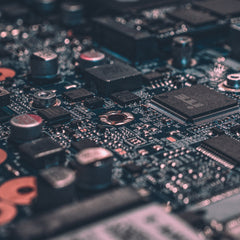For years, the conversation around IoT centered on the “convergence” of information technology (IT) and operational technology (OT). Enterprises were told that blending digital systems with industrial equipment would unlock efficiency, innovation, and new business models. While convergence remains important, it is no longer enough.
Today, the real driver of IoT success is collaboration. Cross-functional teams of engineers, IT professionals, operations leaders, and external vendors must work together to design, secure, and deploy connected systems. Without collaboration, even the most advanced IoT technologies struggle to deliver their full potential.
At Grid Connect, we help organizations move beyond the idea of convergence to embrace collaboration as the foundation for effective IoT ecosystems.
From Convergence to Collaboration
IT/OT convergence was once viewed as the cornerstone of IoT adoption. The logic was simple: if IT systems could collect, store, and analyze data from OT devices, businesses could improve visibility and efficiency.
But convergence on its own has limits. Technical integration does not automatically lead to cultural alignment between IT and operations teams. It does not guarantee collaboration with engineers designing embedded systems or with vendors supplying platforms and hardware.
Moving beyond IT and OT convergence in IoT requires a broader shift: creating collaborative frameworks that connect every stakeholder in the ecosystem.
Why Collaboration Matters in IoT
IoT projects are inherently complex. They involve diverse technologies, from sensors and gateways to cloud analytics and edge computing. This complexity makes collaboration a necessity.
Cross-functional collaboration drives IoT success because it ensures that every team brings its expertise to the table:
-
IT teams focus on data security, integration with cloud platforms, and enterprise-wide network performance.
-
Engineers design hardware, firmware, and connectivity solutions that make devices reliable and scalable.
-
Operations teams shape workflows, training, and adoption strategies to keep systems running smoothly.
-
Vendors and solution providers deliver the specialized tools, platforms, and services that make IoT ecosystems possible.
When these groups collaborate instead of working in silos, IoT solutions become more secure, more scalable, and more aligned with business goals.
Key Areas Where Collaboration Drives Value
Collaboration brings measurable benefits across the entire IoT lifecycle:
System Design
IT teams and engineers working together can select the right connectivity, anticipate integration challenges, and design systems that scale as business needs grow.
Security
Security is only effective when IT, engineers, and vendors collaborate on consistent policies. Joint planning reduces vulnerabilities and ensures compliance.
Deployment and Adoption
Operations teams play a critical role in turning IoT from a technical project into a business solution. By collaborating with engineers and IT, they ensure usability, training, and long-term maintenance are built in from the start.
Vendor Alignment
IoT ecosystems rarely come from a single provider. Collaboration between vendors and internal teams creates interoperability and reduces the risk of fragmented systems.
These areas demonstrate how collaboration between IT teams, engineers, operations, and vendors creates solutions that are not only technically sound but also practical and sustainable.
Collaboration as the Next Step in IoT Transformation
The shift from convergence to collaboration marks a new phase in IoT maturity. Convergence solved the “what” in connecting IT and OT systems. Collaboration solves the “how” in ensuring all stakeholders work toward a shared outcome.
Collaboration as the next step in IoT transformation creates:
-
Enterprise-wide visibility: Information flows seamlessly across departments.
-
Stronger adoption: Teams are invested in the process, not sidelined by technology.
-
Resilient systems: Multiple perspectives catch risks earlier and improve performance.
This shift acknowledges that IoT success is less about technology alone and more about how people and processes align around it.
Building Collaborative Ecosystems with Grid Connect
At Grid Connect, we recognize that IoT is not just about devices or protocols. It is about building ecosystems where people, processes, and technology collaborate seamlessly.
Our expertise in embedded hardware, connectivity, and system integration allows us to serve as a bridge between IT, OT, engineering teams, and vendors. By aligning technical and organizational needs, we help enterprises create collaborative ecosystems for IoT that are scalable, secure, and designed for long-term value.
With Grid Connect, collaboration is built into every project from the start.
The era of simply converging IT and OT is behind us. Collaboration is now the defining factor in IoT success. By fostering alignment between IT, engineers, operations teams, and vendors, enterprises can build connected systems that deliver greater adoption, stronger performance, and higher ROI.
Grid Connect is here to help organizations embrace collaboration and unlock the full potential of IoT.
Ready to move beyond convergence? Contact Grid Connect to start building your collaborative IoT ecosystem today.







